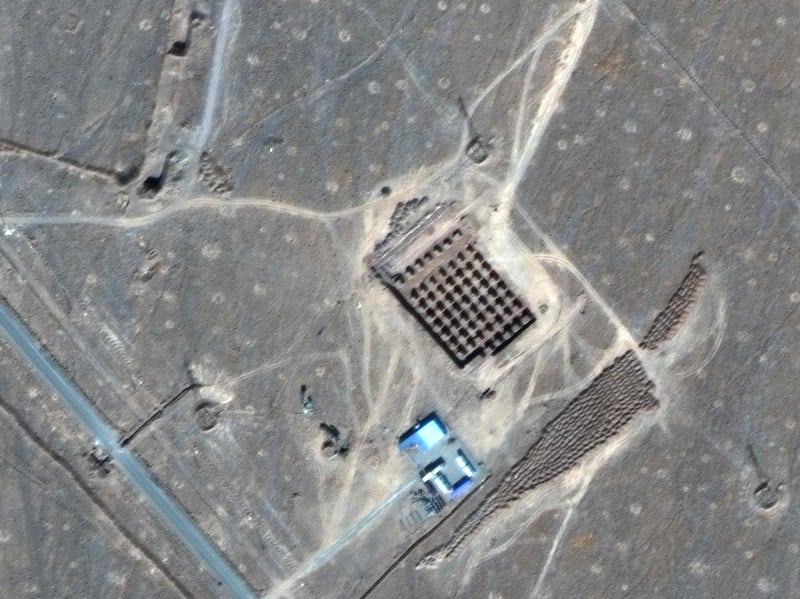Live updates: Follow the latest on Israel-Gaza
Iran’s nuclear programme is back in the spotlight as the world awaits Israel’s response to a missile and drone attack on its soil, the first direct attack by Iran on Israel.
On Tuesday, Rafael Grossi – the head of the International Atomic Energy Agency tasked with inspecting Iran’s nuclear programme and verifying if it is intended for civilian use – said Iran informed him that “all the nuclear complexes that we are inspecting every day would remain closed on security considerations”.
On the risk of an Israeli attack, he said the agency was “always concerned about this possibility.” Inspections resumed soon after they were suspended, but the brief halt has raised new fears of war.
If Israel decides to launch retaliation inside Iran, it could be tempted to combine its long-held objective of slowing Iranian nuclear research – suspected by some experts of inching Iran towards nuclear weapon capability – with striking back for the latest attack.
This concerns supporters of diplomacy, who say if the attacks fail to halt Iran’s nuclear programme, it could have the opposite effect and accelerate it while weakening Iran’s co-operation on the issue.
Mr Grossi has previously said Iran has enough enriched uranium for “several” nuclear bombs, if it chose this path.
But where are Iran's main nuclear sites that the UN has inspected, or obstructed from visiting in past disputes, and what is the current controversy?
Where are Iran's nuclear research sites?
Iran has declared 21 sites to the agency and the organisation has also inspected suspected sites where uranium particles have been found – including particles of uranium enriched over 80 per cent – close to the level generally required for a nuclear weapon.
On Wednesday, Iran denied this was a problem, despite the IAEA long insisting Tehran had not explained the highly enriched uranium traces.
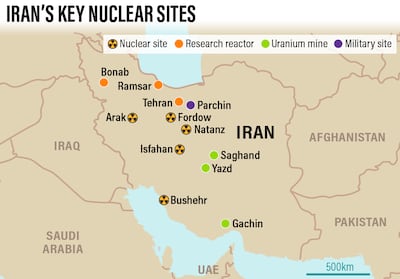
Instead, Mohammad Eslami, the head of the Atomic Energy Organisation, said they were co-operating with the IAEA, having reinstalled cameras installed by inspectors at sensitive sites, that were previously taken offline.
“Engagement with, and supervision by, the IAEA are ongoing and IAEA director general Rafael Grossi is to travel to Iran in the future,” he said.
Iran's nuclear research sites are scattered across the country but the biggest, Natanz and Fordow, are embedded in mountains 225km south of Tehran and 32km north-east of Qom.
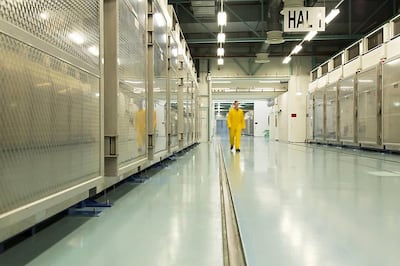
Inspections over the years have been intermittent, despite the US, the EU and the UN insisting on access, mirroring contentious talks on returning to a 2015 deal that former US president Donald Trump scrapped.
The Joint Comprehensive Plan of Action under Barack Obama, Mr Trump's predecessor, briefly allowed UN inspectors access to sites, highly regulating uranium enrichment for civilian purposes, in exchange for a significant easing of sanctions.
However, since its collapse and the restoration of tight sanctions on Iran, relations between the agency and Tehran have frayed, with Iran even accusing the organisation of working with Israel to sabotage its nuclear complexes.
In March, the organisation accused Iran of making worrying statements on its “technical capabilities to produce nuclear weapons,” which “only increase the director general’s concerns about the correctness and completeness of Iran’s safeguards declarations”.
The nuclear watchdog is still asking Iran to explain undeclared nuclear material at four sites – Lavisan-Shian, Varamin, Marivan and Turquzabad.
For years, Israel has invested heavily in slowing the programme, launching a cyber attack on enrichment plants in 2010, through the Stuxnet virus, which damaged highly sensitive equipment used in uranium enrichment by breaking computer software. It also stands accused of sabotaging crucial research and uranium enrichment sites.
Scientists too, have been assassinated, most prominently Mohsen Fakhrizadeh, a nuclear physicist and member of the Islamic Revolutionary Guards Corps, widely seen as the leading figure behind Iran’s nuclear weapons research. He was killed near Tehran in 2020.
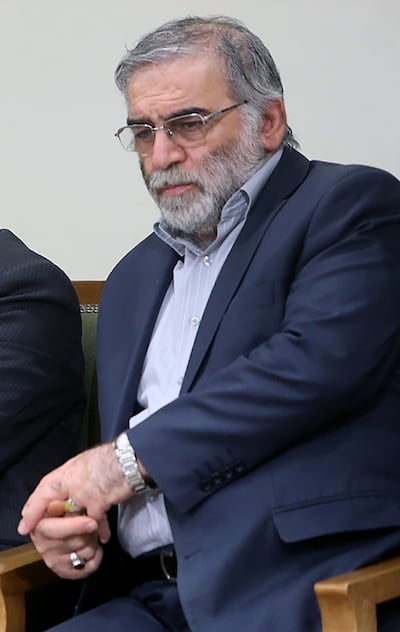
If Israel decides to strike Iran’s nuclear programme directly, it has a range of options that could range from hitting Iran’s space programme, which some analysts say is cover for producing a nuclear missile, to striking uranium enrichment complexes deep underground.
Iran denies it seeks nuclear weapons, although some Iranian officials including Kamal Kharazi, the head of the Strategic Council for Foreign Relations, said Iran could build a bomb if it desired.
“People may not be looking at Iran’s nuclear ambitions, but the problem exists,” Mr Grossi said in November last year.
Fordow and Natanz – the hard targets
Natanz, Fordow, Arak and Esfahan are the most well-known nuclear sites while another, Parchin, is a large military research complex said to be critical for Iran’s work on missile technology.
All sites have suffered alleged sabotage attacks or unexplained fires or explosions, although there has been no known attack at Arak, despite Iran’s claims to have foiled one.
Fordow, an enrichment plant in the mountains near Qom, and formerly an IRGC base is thought to be the site where nuclear research began in the early 2000s, according to the International Institute for Science and Security.
The existence of the site was not confirmed until 2009, when the US, Britain and France jointly accused Iran of hiding construction from the UN, warning that the site was not intended for “peaceful” nuclear research.
Already a hardened structure in 2009, the site had at least one concrete tunnel leading into a mountain, and work there hastened in the early 2010s, sparking concern from the nuclear watchdog.
Under the JCPOA, enrichment there was briefly halted but resumed in 2019 once the action plan collapsed.
Another well-known site is Natanz, which consists of an overground and underground site. The overground part of the enrichment site was hit by a large explosion in 2021. Since the explosion, Iran has allegedly accelerated construction work underground.
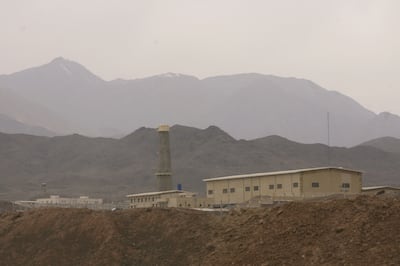
About 225km south of Tehran, Natanz has four tunnel entrances into the Kuh-e Kolang Gaz La, or “Pickaxe Mountain,” according to the James Martin Centre for Nonproliferation Studies.
Both Natanz and Fordow are thought to be heavily defended by anti-aircraft systems, and experts say only the largest bombs designed to penetrate the earth and crush underground bunkers, could damage the complexes.
Israel does not possess such bombs – GBU-57s, or even jets that could carry them, although it does have smaller GBU-72s, which could seriously damage hardened structures closer to the surface and, possibly, bury or destroy tunnel entrances.
Aside from this infrastructure, Iran has dozens of research complexes above ground – with a large site at the Esfahan Nuclear Technology Centre.
Work at many of these sites is not focused specifically on uranium enrichment but looks into missile development, research on missile fuel, conventional explosives used to generate nuclear explosions and test reactors, which could be used for military research.
